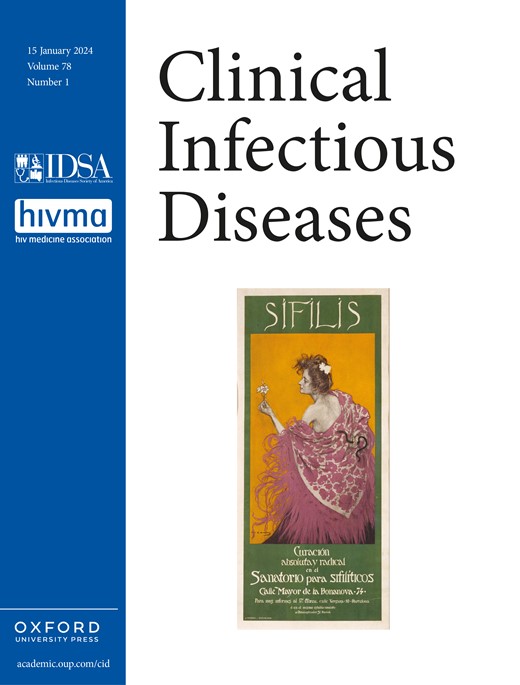A pilot, randomized controlled trial of Dual Daily HIV and sexually transmitted infection pre-exposure prophylaxis using tenofovir disoproxil fumarate/emtricitabine and doxycycline in gay, bisexual and other men who have sex with men and transgender women: The DuDHS Study.
IF 8.2
1区 医学
Q1 IMMUNOLOGY
引用次数: 0
Abstract
BACKGROUND Men who have sex with men (MSM) and transgender women experience high sexually transmitted infection (STI) rates. This study evaluated the feasibility of doxycycline pre-exposure prophylaxis (doxyPrEP) for STI prevention in these key populations. METHODS Sexually-active MSM and transgender women without HIV with prior syphilis were recruited. Participants initiated HIV PrEP with tenofovir disoproxil fumarate/emtricitabine (TDF/FTC) daily for 48 weeks, and were randomized 1:1 to daily doxyPrEP for 48 weeks (immediate arm), or doxyPrEP initiated at 24 weeks (deferred arm). Primary outcomes included adherence, measured using questionnaires, along with tolerability; STI incidence (chlamydia, gonorrhea, syphilis) was a secondary outcome. Nasal carriage of S. aureus was assessed serially for doxycycline resistance. RESULTS Fifty-two participants were enrolled into the immediate (n=26) and deferred (n=26) arms. At 48 weeks, self-reported adherence (≥95%) was 75.0% vs. 66.7% (p=0.538) for TDF/FTC, and 70.8% vs. 61.9% (p=0.526) for doxycycline in the immediate vs. deferred arms, respectively. No doxyPrEP-related serious adverse events occurred. Incidence of any STI at 24 weeks was reduced in the immediate vs. deferred arms, and over 48 weeks, being on doxycycline (vs. being off; i.e. first 24 weeks of deferred arm) was associated with STI reduction (adjusted odds ratio [aOR] 0.36; 95 % confidence interval [CI] 0.15-0.89). Emergent doxycycline-resistant S. aureus was identified in six individuals, with five in the immediate arm (p=0.077). CONCLUSIONS Dual HIV/doxyPrEP is feasible and associated with a significant reduction in incident STI. Further evaluation of dosing strategies, efficacy and impact on antimicrobial resistance is warranted.求助全文
约1分钟内获得全文
求助全文
来源期刊

Clinical Infectious Diseases
医学-传染病学
CiteScore
25.00
自引率
2.50%
发文量
900
审稿时长
3 months
期刊介绍:
Clinical Infectious Diseases (CID) is dedicated to publishing original research, reviews, guidelines, and perspectives with the potential to reshape clinical practice, providing clinicians with valuable insights for patient care. CID comprehensively addresses the clinical presentation, diagnosis, treatment, and prevention of a wide spectrum of infectious diseases. The journal places a high priority on the assessment of current and innovative treatments, microbiology, immunology, and policies, ensuring relevance to patient care in its commitment to advancing the field of infectious diseases.
 求助内容:
求助内容: 应助结果提醒方式:
应助结果提醒方式:


